I’ve lost faith that there are people with “green thumbs” and converted to the belief that beautiful gardens and productive small farms are mostly a matter of persistence.
Much of what we try to grow is eaten by slugs, snails, rabbits, wild pigs, deer, uprooted by moles, scorched by sun, or swallowed by weeds.
My strategy has been to just keep throwing seeds around. So far it’s working out.
I could give a couple hundred examples of repeated failures that are seeded into something harvest-able but I’ll start with one of the most recent experiments.
We’ve adopted a “no-till” style of growing mostly out of necessity. We don’t have a tractor, but we do have loads of free “waste streams” that to us represent stored solar energy, which ultimately becomes food. We pile up hay, wood-chips, grass, manure, compost on our beds and the energy is released by countless organisms who feast upon it. The layers of material act as giant sponge, absorbing every drop of rain that falls on them and releases it during dry spells, in which we find ourselves right now.
This type of growing isn’t without challenges. The proliferation of life that happens just under the surface of the mulch also includes pests, like slugs, that can clean a couple beds of cabbage in a night.
Another limitation of growing “no-till” is that certain crops, like carrots, require a finely tilthed seed bed and a few weeks head start on weeds. Otherwise, they struggle or don’t make it.
We’ve seeded every plant we’ve grown by hand the last 4 years. It’s a lot of work and takes time. So last season we invested in a fancy, new Jang seeder. I was eager to try it on the field, but the machine wasn’t able to push through any mulch on the surface of the soil. That’s not to say it’s not a beautiful machine. It is. Just that it requires either another machine to prepare a loose, flat, weed/rock-free bed, or else massive amounts of hand labor to give vegetables.
A gentleman who owns a landscaping company nearby offered to bring his tractor and till some plots on the field. I thought that sounded better than stomping on a shovel all day so I happily agreed.
One of the plots we planted to potatoes. The tilling loosened the ground which greatly sped up the amount of time it took us to plant them. We worked in a pair, one person plopping a hoe down, pulling the soil aside, the other dropping a potato in the hole. We mulched with A LOT of hay (as of this writing, around 8 rolls of hay in about 60 sq meters) and will keep mulching as they grow. The potatoes look well despite the lack of rain. I think mostly due to the hay.
The second plot was immediately seeded with the Jang to a few beds of carrots, radishes, and beats. Our farm students Domča and Lucka lightly mulched the seeded beds mostly because I can’t stand to see bare soil. Naked earth is indecent. Sure, it looks appealing the first few days all clean and smooth, but a few days of sun and it gets crusted over and the weeds begin to grow, it gets ugly fast.
With that said, I think we would’ve done well to leave it uncovered for some time to allow the soil warm up. This was the beginning of April and the ground was still cool. Dark brown soil would absorbs heat, which speeds up germination. Light yellow hay reflects it, keeping the soil cold. Mulching might’ve worked better later in the season when the soil was warm and the mulch would be needed to shelter the surface and retain moisture for the germinating seeds.
The last section I threw purple tansy seed around thickly for the bees and beauty, neither of which should ever be neglected.
The tansy grew like a weed, because it. Nothing else succeeded. I found a few scrawny beat sprouts and maybe five carrots from over a thousand seeds. By this time the grass and weeds had already started growing through, so I again loaded the Jang with Daikon radish, corn, and beans and it ran down the rows with all the enthusiasm of someone forced to walk the plank.
If we’re lucky, we might get a few cobs of corn.
As part of our strategy, we always have an armada of young starts ready to go. In this case it was tomatoes, from last year’s saved seed. Domča and Lucka helped bring compost up from the chicken composting area and we dug holes every 40 cm, dropped in a few handfuls of compost and a tomato plant, mulched with hay, and wished them luck.
The tomatoes have taken off, again, with little to no rain. They don’t compare in size to the tomatoes garden in Slivenec because there we can water.
They’re smaller but bearing a respectable amount of fruit. We ate the first round last week and they were some of the sweetest tomatoes I’ve ever had.
A visitor remarked at the end of a tour the other day, “You must’ve been born a gardener”. I took the compliment, of course. But there’s no secret. Just like cooking, learning a language, or strumming a guitar, growing food is about trying different methods, seeds, timings, star alignments, and seeing what works and what doesn’t. And when it doesn’t, just keep putting seeds in the ground.
Let it be known once and for all. There is no green thumb. Just grit.

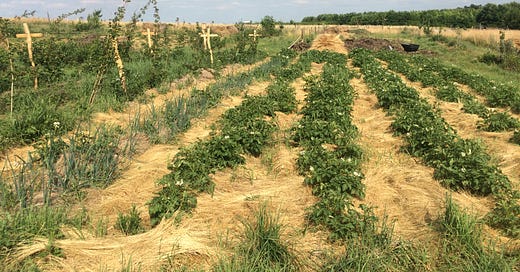


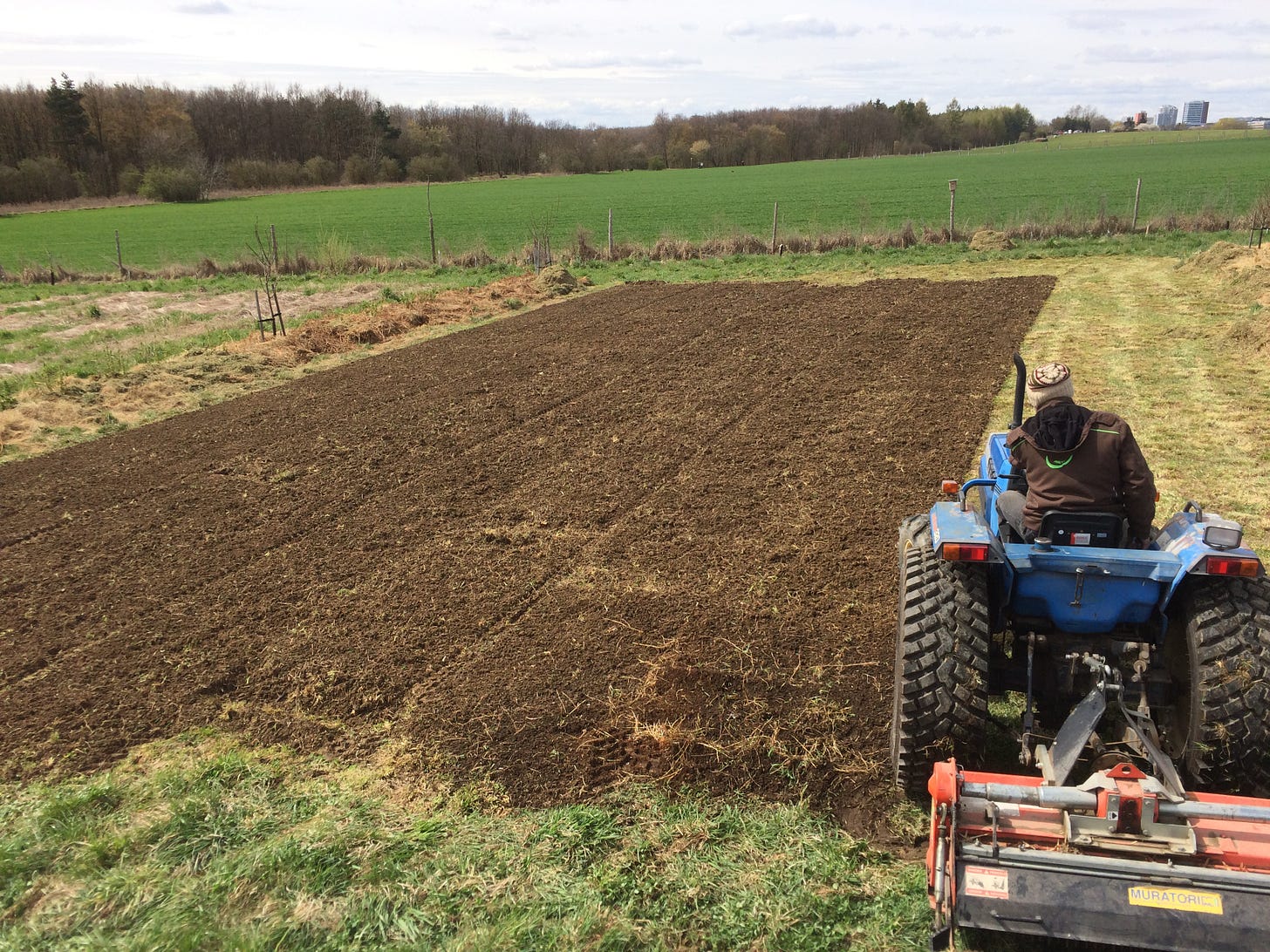

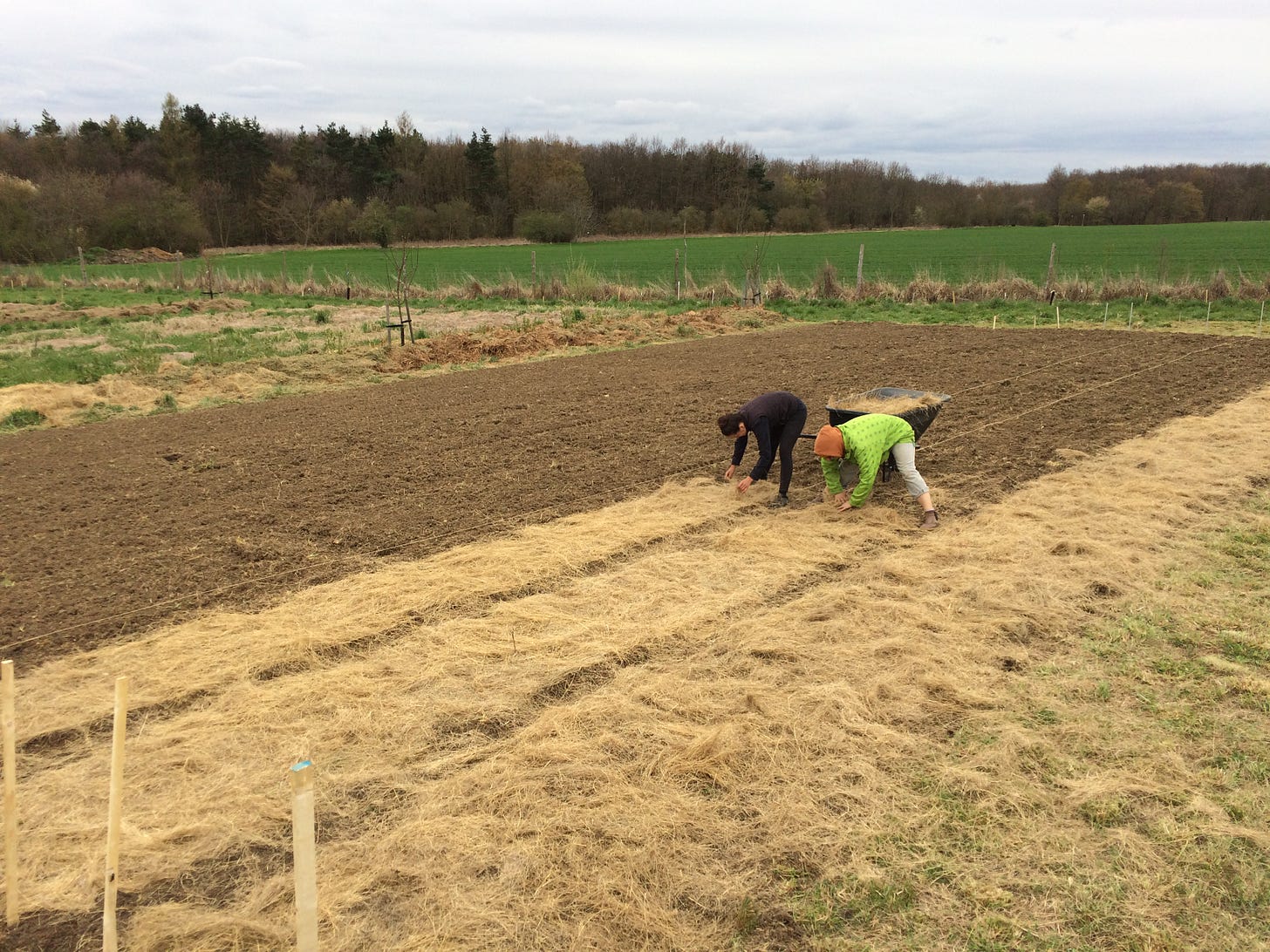
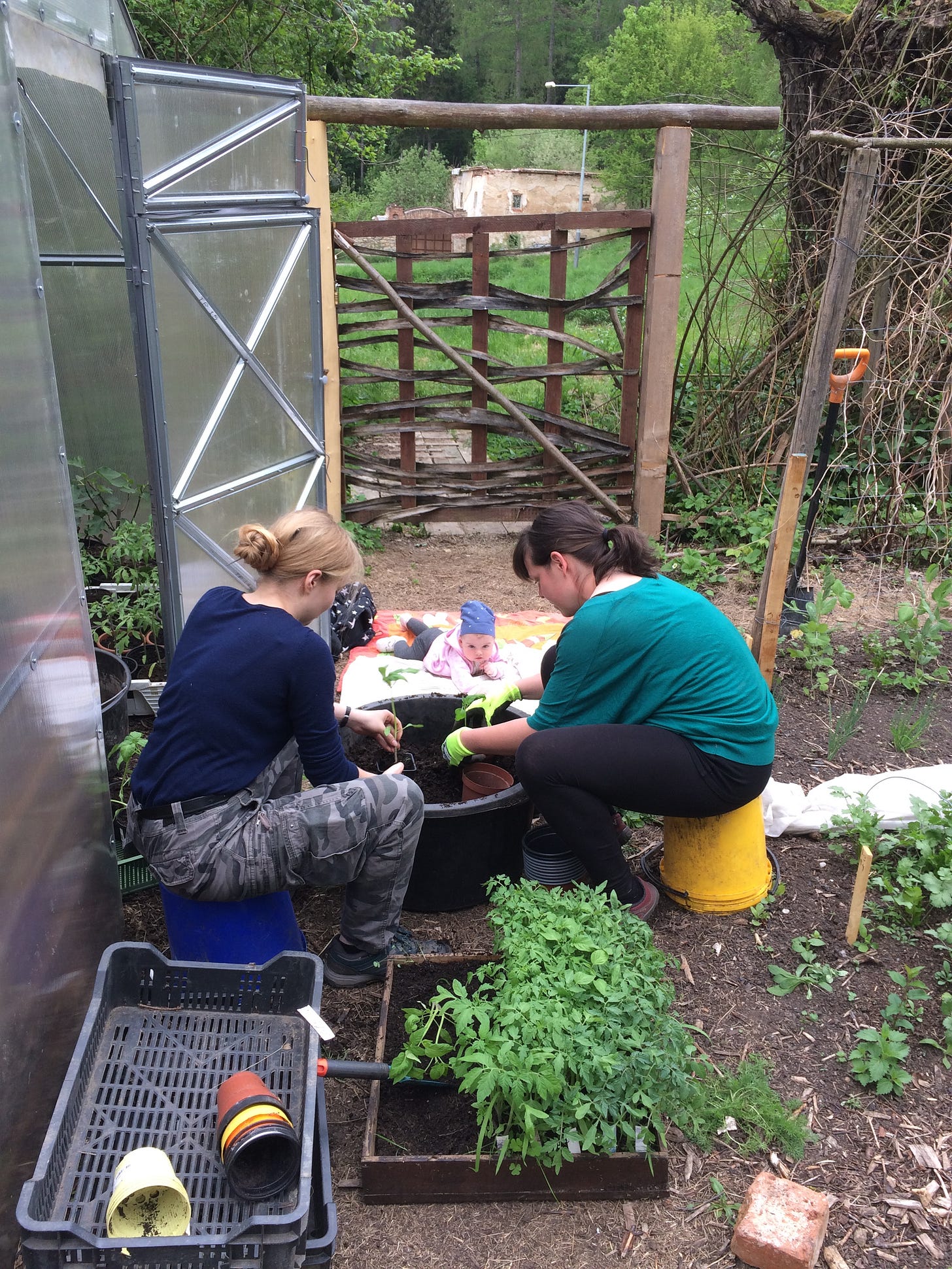
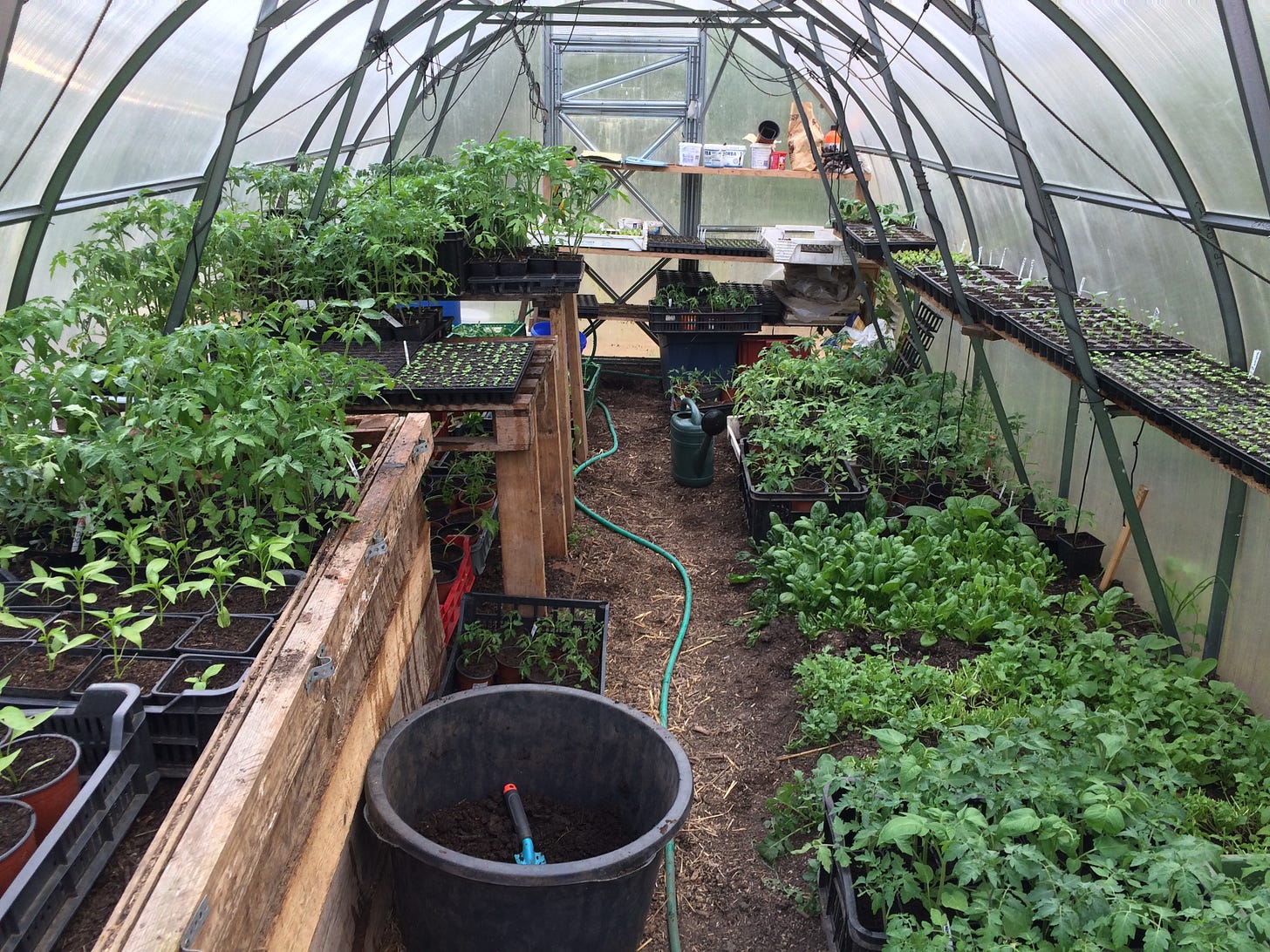
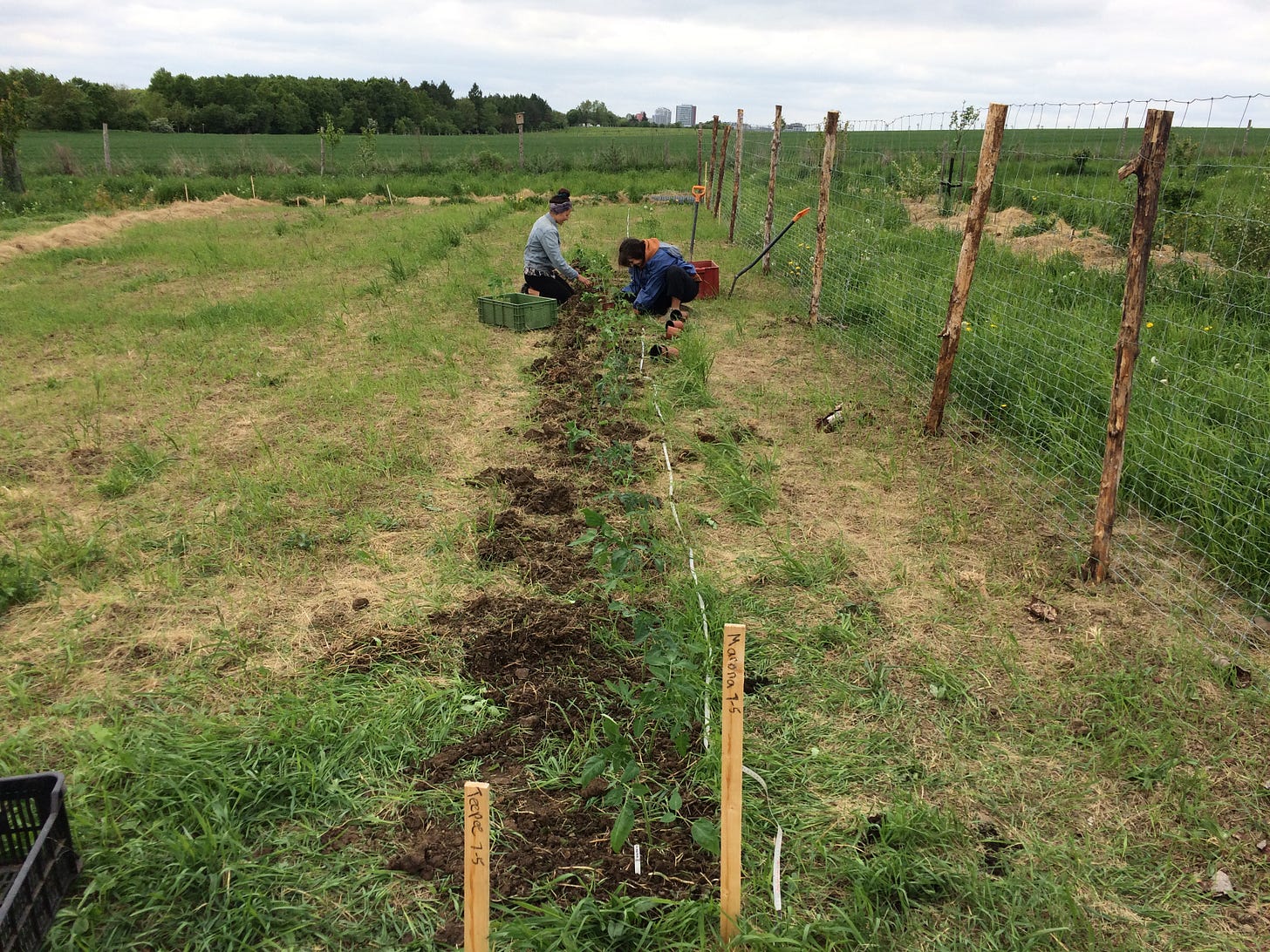
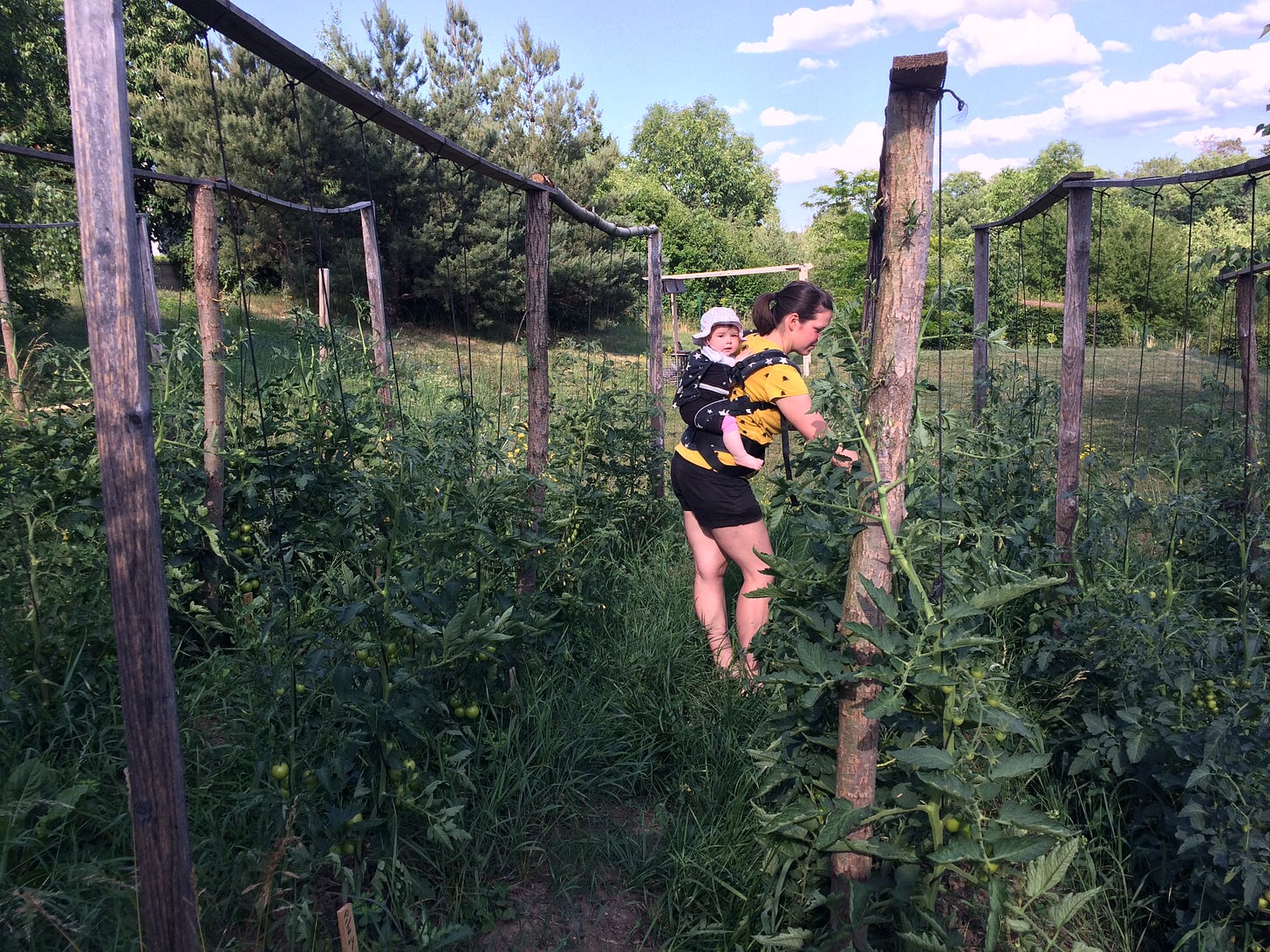
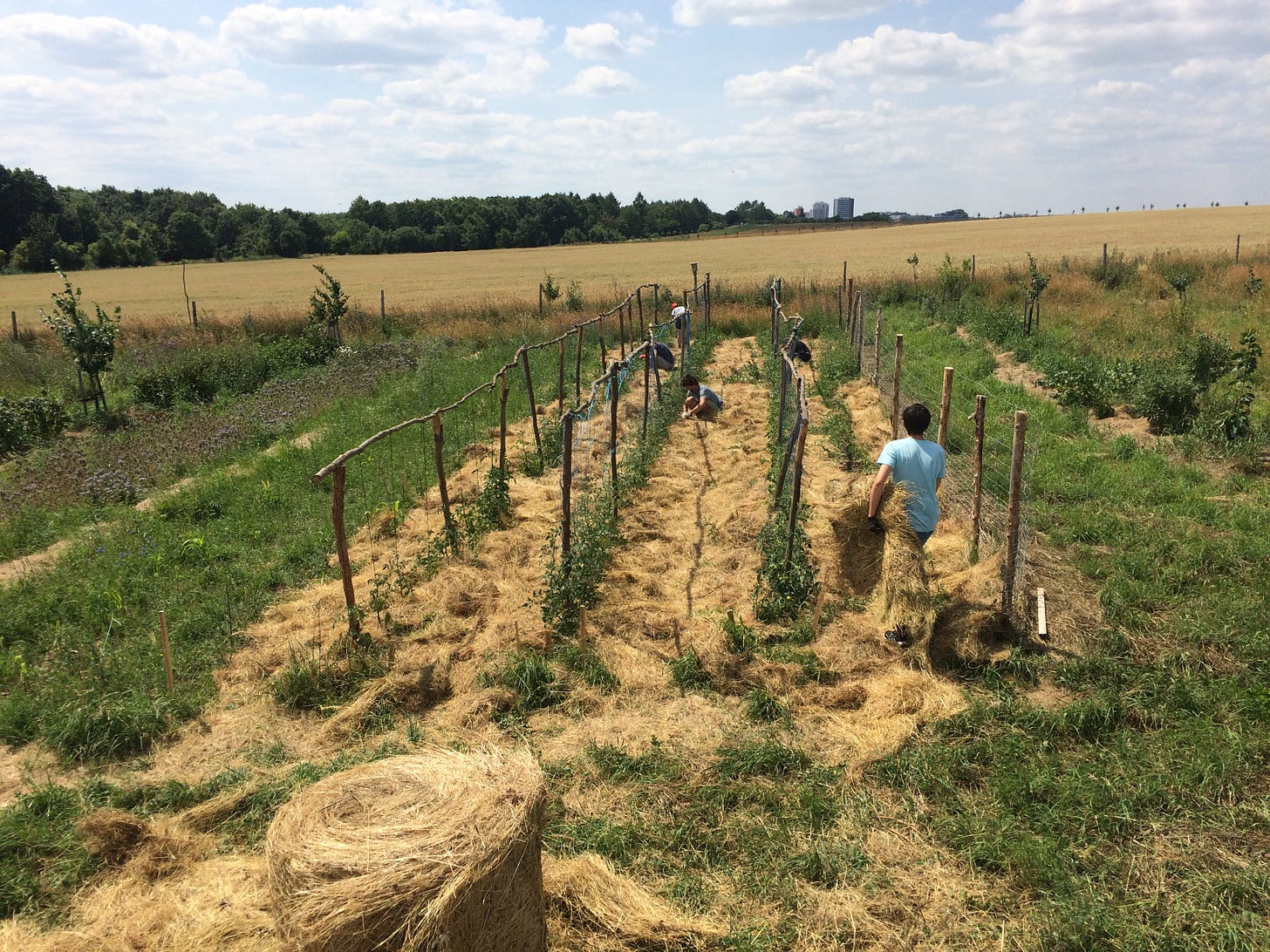
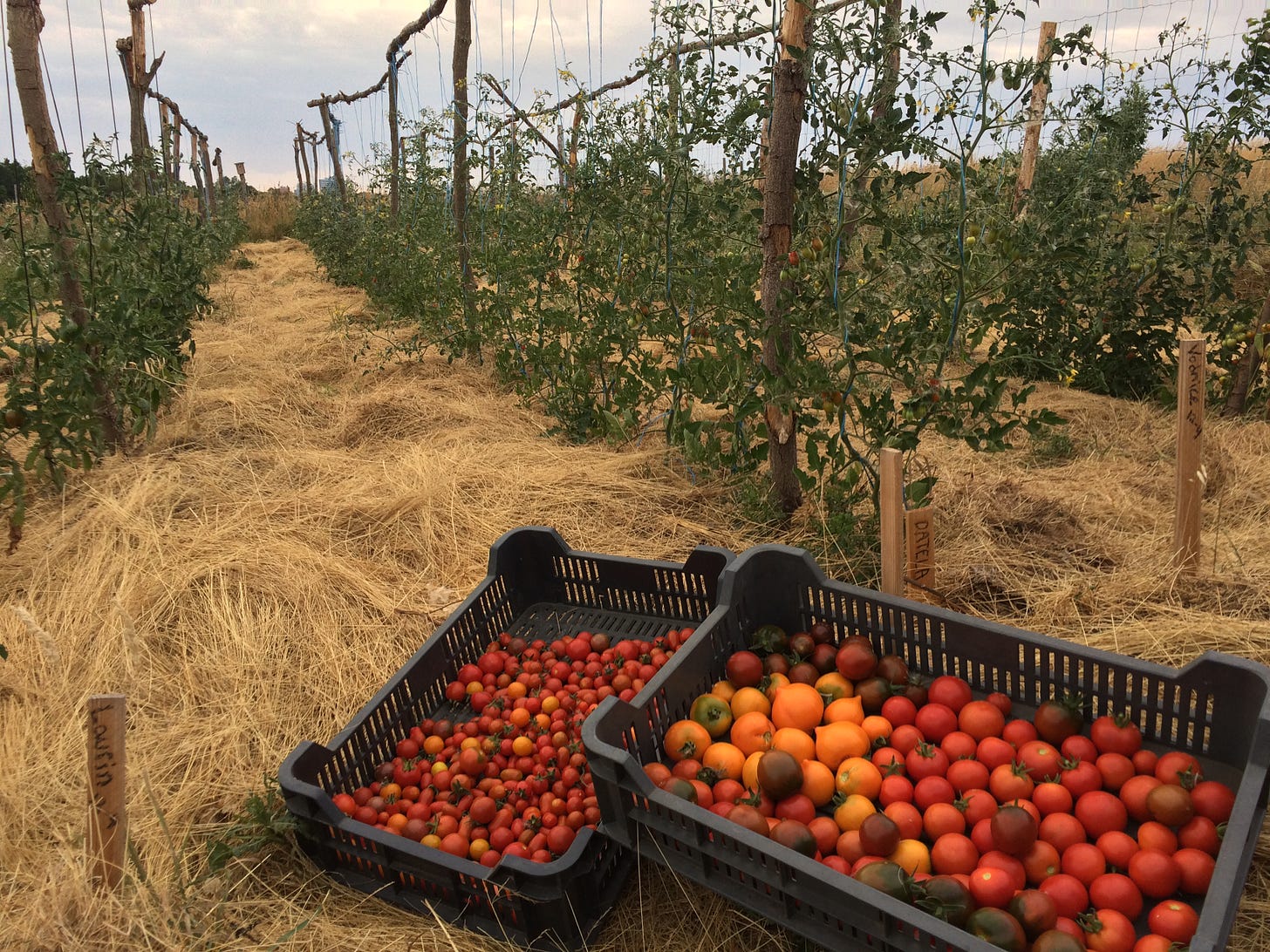
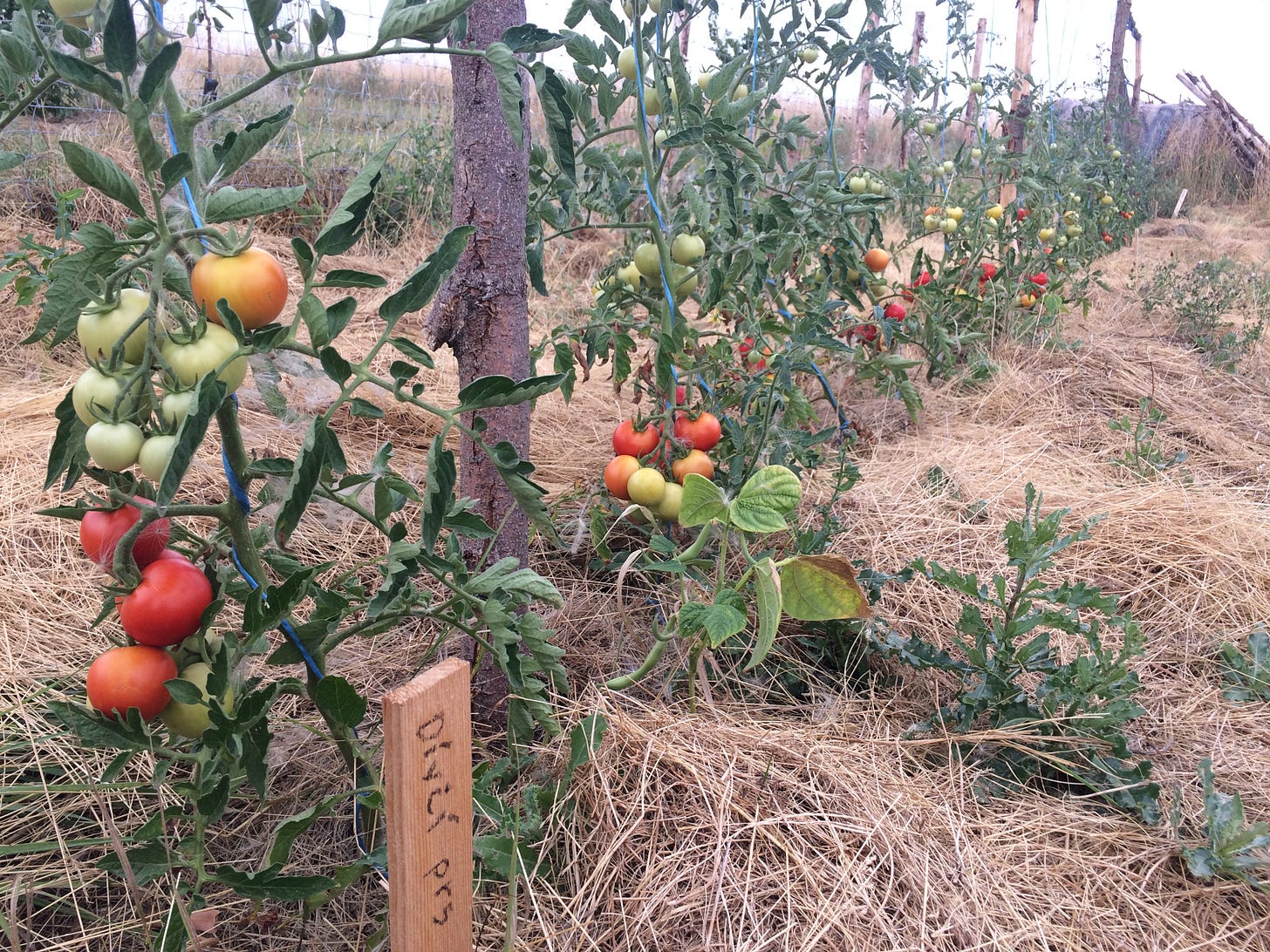
Good luck with the future crops! Hope you get a bumper crop of potatoes!